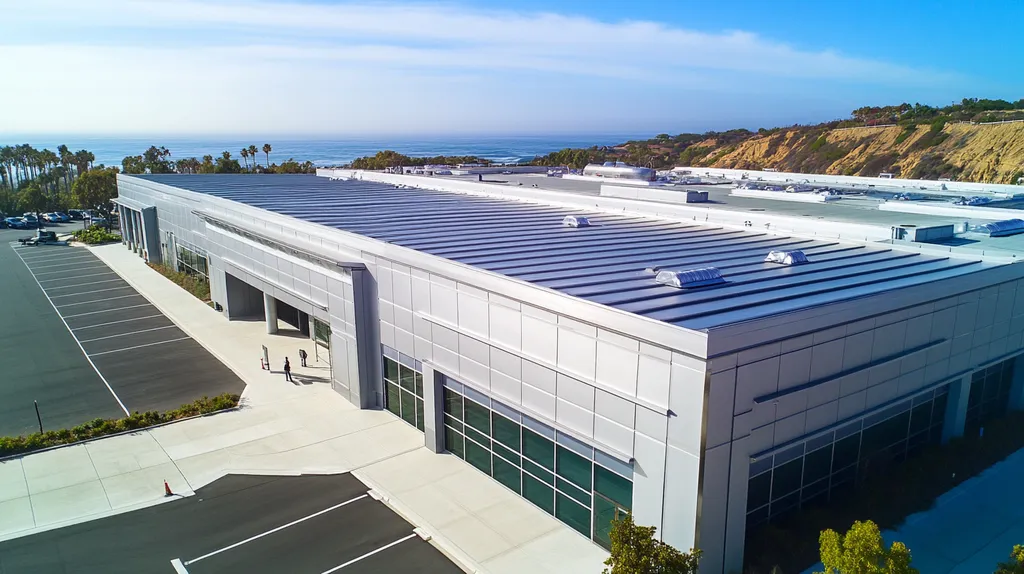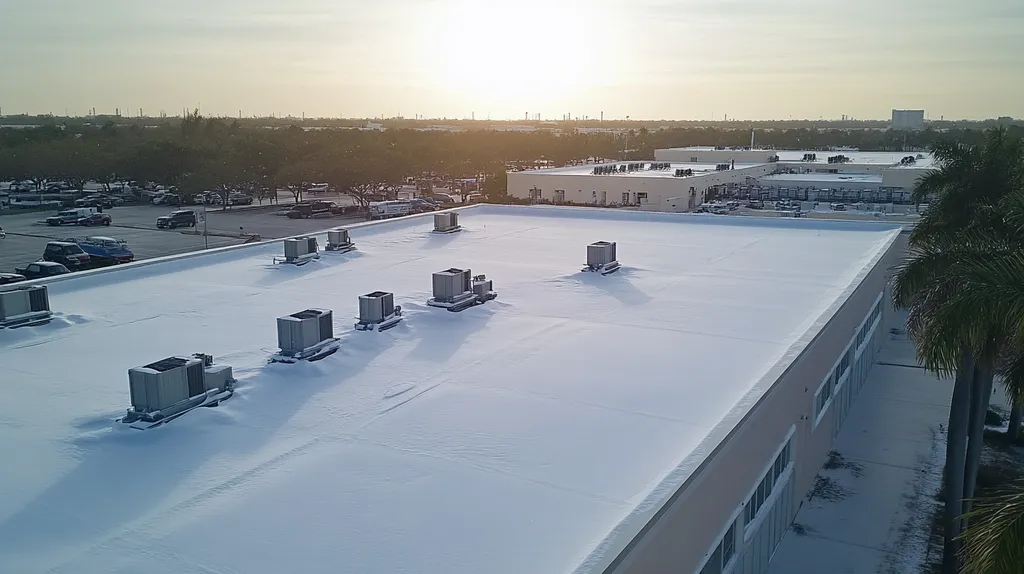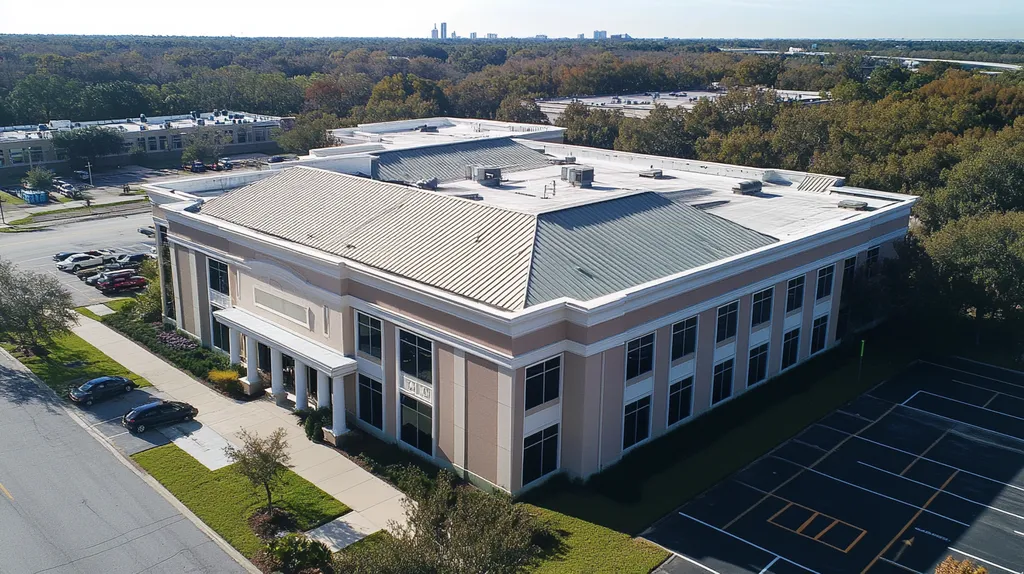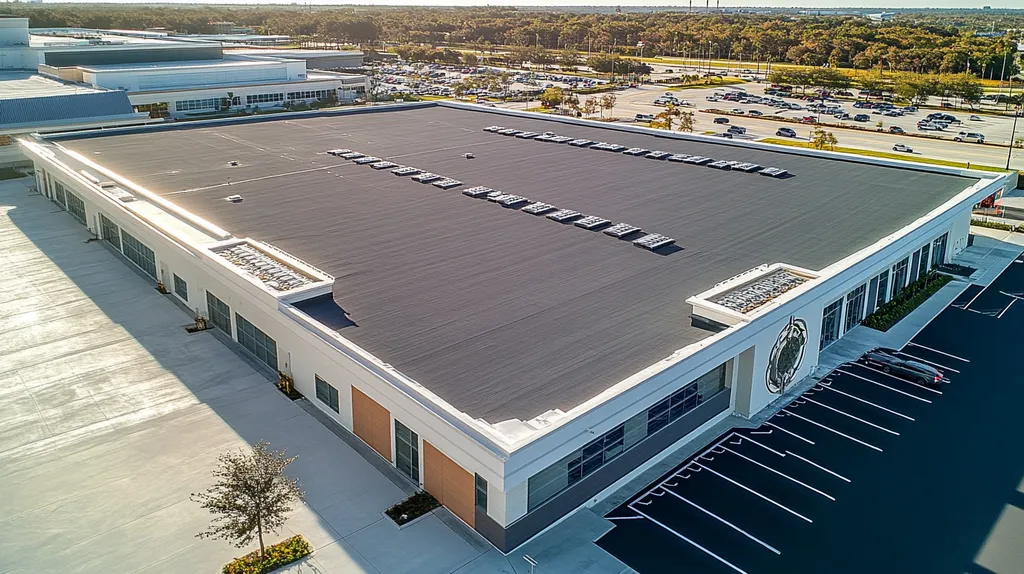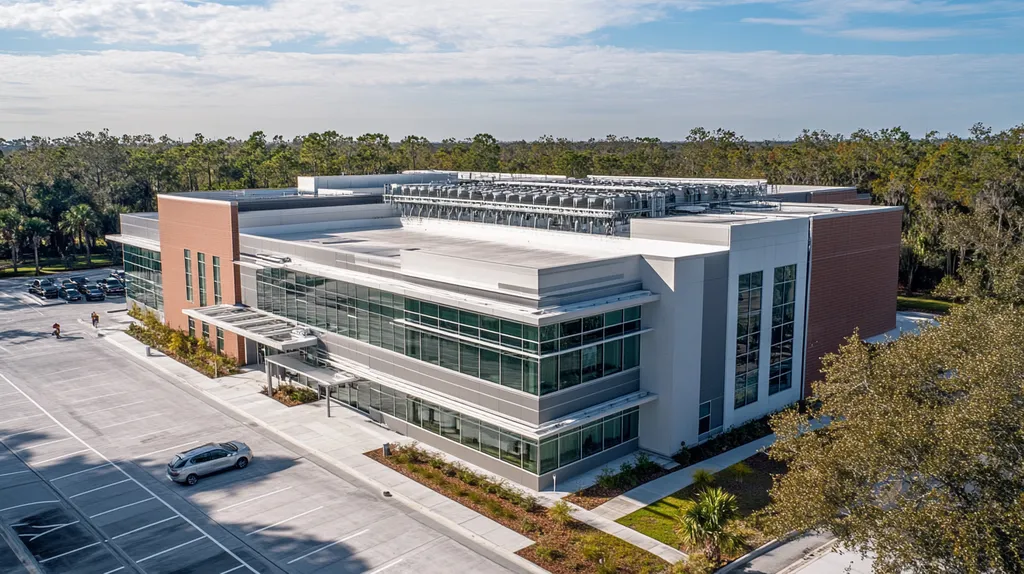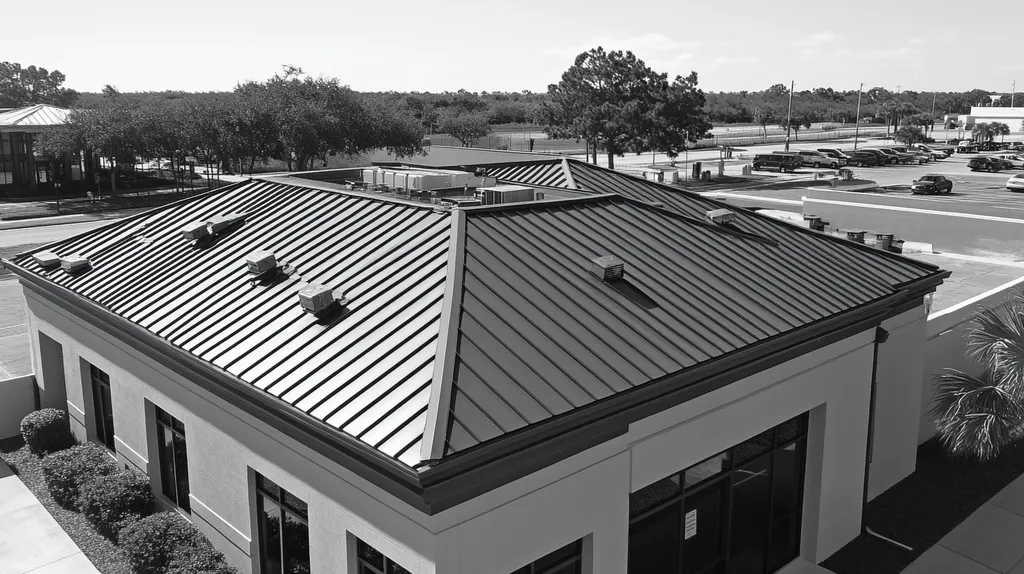In the high-stakes world of commercial roofing, emergency response certification myths continue to put facilities at risk. Industry data shows that 40% of roof-related workplace accidents stem from inadequate emergency response training and certification gaps.
From OSHA compliance failures to equipment inspection oversights, these widespread misconceptions cost businesses millions annually in preventable damages and liability.
This comprehensive analysis exposes six critical areas where certification misinformation threatens workplace safety and operational continuity, while providing evidence-based solutions for facility managers seeking to enhance their emergency preparedness.
SECTION 1: COMMON MISCONCEPTIONS
The landscape of commercial roofing emergency response is riddled with myths that can jeopardize safety and operational efficiency. Facility managers frequently underestimate critical elements like OSHA training and the significance of regular equipment inspections. Ignorance in these areas can lead to dangerous incidents, increased financial burdens, and lengthy downtimes. It’s crucial to tackle these misconceptions head-on to promote safe and effective roofing practices.
Ignoring OSHA Training Requirements
Many facility managers mistakenly believe that OSHA training is a one-and-done obligation. This misconception can have serious consequences. Continuous education is essential to keep staff informed about the most up-to-date safety protocols. Without regular training, employees may be ill-prepared to handle emergencies effectively.
Inadequate training can lead to misunderstandings of emergency procedures, significantly delaying response times. Research indicates that organizations with routine safety training experience a notable decline in workplace injuries. Developing a strong safety culture begins with a commitment to ongoing education.
Moreover, being compliant with OSHA regulations is crucial—not only does it safeguard employees, but it also shields the facility from hefty fines. Non-compliance can result in steep penalties and increased liability during incidents. Therefore, staying current with training is not just a suggestion; it is essential for safety.
Addressing these training needs is vital, especially when personnel confront actual emergencies. Facility managers should elevate safety training to a central position in their operational strategies to ensure an effective emergency response.
Overlooking Regular Equipment Inspections
Another widespread misconception is that equipment requires only occasional inspections. This oversight can prove disastrous, as roofing machinery can deteriorate rapidly under stress. Regular inspections not only confirm that equipment is operating correctly but also help pinpoint potential dangers before they escalate.
For instance, roof hoists and safety harnesses that go unchecked can fail at critical moments, resulting in severe injuries. The Occupational Safety and Health Administration recommends frequent equipment inspections to guarantee safety. A lack of diligence in this area can lead to fatal consequences.
Commercial properties that adopt rigorous inspection routines typically report fewer accidents and more efficient emergency operations. Consistent equipment evaluations cultivate a proactive safety culture, preserving lives and reducing liability. Facilities should integrate a robust inspection schedule into their standard practices.
By prioritizing regular inspections, facility managers not only align with safety regulations but also protect their team during crucial roofing operations. Diligent equipment oversight can prevent significant delays and legal issues.
Misunderstanding Fall Protection Systems
Misconceptions regarding fall protection systems can lead to tragic outcomes during emergencies. Many individuals assume basic safety equipment is adequate, overlooking the need for tailored solutions specific to each job site. Such misunderstandings jeopardize worker safety and elevate accident risk.
For example, relying solely on guardrails may not be sufficient across all roofing projects. Effective fall protection must address site-specific challenges, including roof height and job nature. Falls remain a leading cause of fatalities in the construction sectors, underscoring the urgency of tailored safety measures.
A comprehensive fall protection system encompasses not just equipment but also robust training and clear protocols for effective use. Providing thorough safety training equips workers to utilize these systems properly during emergencies, greatly reducing potential risks. Facilities should include a diverse range of fall protection measures tailored to their unique roofing situations in their safety plans.
To ensure compliance and safeguard employees, facilities must embrace a well-rounded approach to fall protection. This should consist of regular system evaluations and the implementation of customized safety solutions that meet specific roofing requirements.
SECTION 2: PRACTICAL IMPLICATIONS
The stakes in commercial roofing emergency response are incredibly high. A recent study indicated that more than 60% of businesses face substantial operational disruptions due to inadequate emergency preparedness. This shortfall not only puts workers’ safety at risk but also drives up repair costs and prolongs downtime during roofing crises. Grasping the practical implications of appropriate certifications is essential for facility managers and property owners who want to safeguard both people and property.
Impact on Workplace Safety Culture
Workplace safety culture is deeply connected to how prepared a team is for emergencies. When roofing teams are certified in emergency response, they create a proactive and safety-oriented environment. This certification empowers them with vital skills while promoting open communication and collaboration among team members.
With a certified team in place, risks can be identified and addressed before they escalate. Facility managers often observe a significant decline in accidents and insurance claims when roofing contractors prioritize safety certifications. This positive mindset boosts employee morale and productivity, solidifying safety as a core organizational value.
A strong safety culture also elevates a company’s reputation. Clients and partners are more likely to collaborate with organizations that prioritize safety, opening doors to potential growth. For property owners, this translates to higher tenant satisfaction and retention, driving long-term success.
In essence, investing in emergency response certifications for roofing teams is crucial for cultivating a robust safety culture that not only shields employees but also enhances overall business operations.
Consequences of Inadequate Hazard Recognition
The repercussions of poor hazard recognition during roofing emergencies can be dire. Facility managers frequently underestimate the risks posed by untrained personnel responding to crises. Inadequate hazard recognition can lead to injuries, property damage, and expensive legal complications.
Without formal training, employees may misidentify hazardous conditions, worsened by their lack of awareness. For instance, failing to recognize air quality concerns from damaged roofing materials can pose serious health risks to building occupants. Such oversights can delay evacuation efforts, further complicating emergency scenarios.
Moreover, insufficient hazard recognition may strain relationships between facility managers and insurance providers. Claims stemming from preventable incidents can lead to increased premiums or even rejection of claims, adding significant financial pressure. This reality emphasizes the necessity of having well-trained roofing professionals in emergency situations.
Ultimately, inadequate hazard recognition not only puts lives in jeopardy but can also severely threaten a business’s financial health. Facility managers must prioritize certifications that enhance hazard recognition skills among their roofing teams.
Effects on Emergency Response Preparedness
Emergency response preparedness is a pivotal aspect of managing commercial roofing effectively. Engaging certified roofing professionals ensures that emergency situations are handled swiftly and proficiently. This readiness can dramatically minimize potential damage and recovery time during unfavorable events.
For example, certified teams are trained to quickly assess situations and execute appropriate responses. In the absence of this training, reactions may become disorganized and slow, heightening the risk of additional injuries or damage. Preparedness fosters clarity in roles and responsibilities, facilitating a smoother recovery process.
Additionally, proactive planning and regular drills are vital components of emergency preparedness training. These activities instill confidence among employees, reinforcing proper response protocols so that teams are ready to act effectively under pressure. This preparedness could be the difference between a minor issue and a full-blown crisis.
In conclusion, certifications are integral to enhancing emergency response preparedness. Property owners and facility managers who prioritize these credentials can effectively protect their assets and the well-being of their employees, paving the way for greater operational success.
SECTION 3: COST OF MISINFORMATION
In the world of commercial roofing emergency response, misinformation can have serious financial repercussions. Shockingly, around 30% of businesses are hit with hefty fines due to safety standard violations. This alarming statistic emphasizes the need for facility managers to acquire accurate information on certifications and emergency response procedures. Misunderstanding these critical areas can lead to poor choices, jeopardizing both safety and financial stability. The risks are significant, and neglecting these issues can result in major operational setbacks.
Financial Consequences of Non-Compliance
The financial fallout from non-compliance can be devastating for a commercial operation. Companies that neglect safety regulations may face fines ranging from thousands to millions of dollars. These immediate costs can have a ripple effect, leading to higher insurance premiums and increased operational expenses over time.
Moreover, if accidents occur due to compliance failures, legal fees can accumulate quickly. The repercussions extend beyond just financial losses; businesses may also find themselves embroiled in lawsuits from injured employees or customers. Such legal entanglements can drain resources and divert management’s attention from essential operations.
Prioritizing proper certifications and compliance is a proactive approach that can mitigate these financial risks and even lead to improved insurance rates. In essence, compliance not only protects against unnecessary costs but also helps cultivate a safer work environment.
Increased Risk of Workplace Accidents
Misinformation surrounding roofing emergency responses significantly heightens the risk of workplace accidents. Without the right training and adherence to certified protocols, employees can find themselves in unsafe conditions. This negligence can lead to preventable incidents, including falls and injuries, which can be tragic and entirely avoidable.
Statistics show that facilities lacking certified emergency response plans report higher accident rates. Each incident not only jeopardizes employee safety but also disrupts operations, resulting in unplanned downtime and productivity losses. This disruption creates a cascading negative effect throughout the entire business ecosystem.
To counter these risks, facility managers must prioritize accurate information regarding emergency response certifications. Providing training on these protocols fosters a culture of safety that can significantly lower workplace incidents, ultimately protecting employees and maintaining productivity.
Long-Term Damage to Reputation and Operations
The long-term consequences of misinformation can severely harm a company’s reputation. A single accident or compliance failure can damage a business’s public image, leading to lost trust among customers and stakeholders. This erosion of reputation frequently translates into decreased revenue, as clients increasingly seek safer alternatives.
Moreover, operating with outdated or incorrect information can hamper a company’s growth potential. Businesses viewed as unsafe often struggle to attract new clients or retain existing ones, resulting in stagnation or decline. Additionally, these organizations may face challenges in recruiting skilled talent, as employees gravitate toward safer and compliant workplaces.
Enhancing operational resilience requires a commitment to accurate information and adherence to certifications. Establishing a solid emergency response plan not only safeguards the organization but also improves its standing in the industry. Ultimately, the benefits of maintaining a strong reputation and stable operations far outweigh the costs associated with misinformation.
SECTION 4: REALITY CHECK
In the high-stakes arena of commercial roofing, the potential for emergencies is a reality that cannot be ignored. Severe weather events or unexpected structural failures can strike at any moment, making it imperative for facility managers to understand certification requirements. Research indicates that inadequate emergency preparedness can lead to both significant financial losses and compromised worker safety. This section explores the critical nature of OSHA certification standards, the indispensable role of personal protective equipment, and the vital importance of regular inspections for compliance.
Understanding OSHA Certification Standards
OSHA certification standards are not mere recommendations; they are essential regulations designed to safeguard workers. Compliance with these standards significantly reduces the risk of accidents during emergency situations. Facilities that neglect OSHA guidelines risk facing hefty fines, underscoring the serious consequences of non-compliance.
Additionally, trained professionals equipped with OSHA knowledge can navigate hazardous conditions safely and effectively. Regular OSHA training ensures that employees remain well-versed in emergency response protocols. This training can be the crucial factor that distinguishes a rapid resolution from a potentially hazardous scenario.
Maintaining accurate records of OSHA training and certifications is equally important. In an emergency, these documents validate compliance and preparedness. Facility managers must prioritize comprehensive record-keeping to mitigate potential legal challenges.
Ultimately, adherence to OSHA standards not only bolsters safety but also cultivates a reputation for reliability. In the sphere of commercial roofing, this certification serves as a cornerstone of trust in emergency response situations.
Importance of Proper Personal Protective Equipment
In emergency roofing scenarios, the importance of appropriate personal protective equipment (PPE) cannot be overstated. Without proper gear, workers face heightened risks from falls, electrical hazards, and extreme weather conditions. For instance, the absence of suitable harnesses can lead to life-altering accidents.
Employers must ensure that adequate PPE is available and meets industry standards. Essential equipment includes safety helmets, gloves, and non-slip footwear. Providing high-quality gear diminishes the risk of injury, positively influencing employee morale and operational efficiency.
Moreover, training workers in the use of PPE is crucial. Delays in proper adjustment or application can escalate minor emergencies into serious incidents. Regular training sessions help reinforce the necessity and correct use of PPE in high-pressure situations.
By prioritizing both the provision and training of PPE, facilities foster a culture of safety that protects workers and enhances overall operational resilience during emergencies.
Role of Regular Inspections in Compliance
Regular roof inspections are foundational to ensuring compliance and preparedness for emergencies. They allow for the identification of potential risks before they develop into full-blown crises. Facilities that overlook these inspections not only risk structural damage but also face compliance violations.
Establishing a routine inspection schedule is key to ensuring that roofs are maintained in top condition. For example, finding and repairing minor leaks can prevent extensive damage during inclement weather. Timely inspections save facilities substantial money by avoiding costly repairs.
Additionally, these inspections are vital for maintaining certifications. Documenting routine checks demonstrates a commitment to safety and compliance, which reassures stakeholders of the facility’s operational integrity.
In summary, integrating regular inspections into facility management practices is essential for ensuring both safety and compliance. This proactive approach effectively prepares facilities to manage emergencies when they arise.
SECTION 5: EVIDENCE-BASED ALTERNATIVES
The high stakes of commercial roofing emergencies can have devastating financial and operational consequences. Research highlights that companies often suffer significant losses in revenue and reputation due to poorly managed emergencies. To counteract these risks, facility managers and property owners must adopt evidence-based strategies that prioritize safety and responsiveness. This section explores three vital alternatives: implementing comprehensive safety training programs, utilizing manufacturer-specified safety equipment, and developing robust emergency response plans.
Implementing Comprehensive Safety Training Programs
Comprehensive safety training programs are the cornerstone of effective emergency response. These initiatives equip facility staff and emergency responders with essential knowledge about potential hazards, equipment usage, and response protocols. Well-structured training significantly reduces the incidence of accidents, resulting in a safer working environment during emergencies.
Organizations that value safety training enjoy a consistent decline in incidents. In fact, businesses that engage in regular safety training experience a remarkable 30% reduction in accidents related to roof maintenance. This decrease results in lower insurance premiums and fewer interruptions in daily operations.
Ongoing training is essential, incorporating updates on evolving techniques and materials. Regular workshops and simulated scenarios ensure that the workforce is well-prepared for both preventative and reactive measures. Familiarity with emergency procedures can transform a potential crisis into a manageable situation.
Furthermore, training programs should encompass drills that enhance quick decision-making under stress. This preparation not only boosts overall readiness but also empowers team members to respond more effectively during emergencies.
Utilizing Manufacturer-Specified Safety Equipment
Utilizing manufacturer-specified safety equipment is crucial for minimizing risks in emergency situations. Many accidents stem from outdated or improperly used gear that fails to meet required safety standards. By adhering to specific manufacturer guidelines, facility managers ensure safety compliance across all operations.
For instance, employing fall protection systems recommended by the roof’s manufacturer can significantly lower the chances of serious injury. Safety gear, including harnesses, hard hats, and safety lines, should adhere to specifications that accompany roofing materials. This practice not only fosters safety but also maintains warranty conditions.
Effective training programs can inform staff about the proper operation of this equipment. When employees are knowledgeable about how to use safety gear, they can react appropriately during emergencies, thereby greatly reducing risks.
Additionally, regular inspections of all safety equipment must be a priority. Ensuring that all gear is fully operational mitigates the potential for accidents and bolsters overall emergency readiness, ultimately saving companies money in injury-related costs.
Developing Robust Emergency Response Plans
A well-structured emergency response plan is vital for efficient incident management. These plans detail step-by-step procedures for various roofing emergencies, allowing teams to respond swiftly and purposefully when issues arise. A comprehensive plan can dramatically reduce both response time and injury rates.
Emergency response plans should clearly outline roles and responsibilities for all team members. By designating specific individuals to manage communications and safety actions, responses become streamlined. This clarity is essential during high-pressure moments when every second counts.
Regular reviews and updates of these plans are necessary to address emerging risks or past incidents. Learning from previous events enables facility managers to refine strategies that better mitigate current threats, thereby enhancing overall safety.
Drilling emergency response plans with all staff is crucial for fostering familiarity and confidence. Realistic simulations help evaluate the effectiveness of the plan and identify areas for improvement, ultimately creating a more resilient culture of emergency preparedness.
SECTION 6: TEST AND VERIFY
In the high-stakes realm of commercial roofing, overlooking safety measures can have catastrophic consequences. A study by FM Global revealed that businesses failing to conduct regular safety audits face a startling 50% higher risk of severe losses during emergencies. Routine testing and verification not only maintain roof integrity but also enhance the effectiveness of emergency response plans. This section dives into the vital role of safety audits, compliance inspections, and the necessity of updating emergency response plans to safeguard property investments.
Conducting Regular Safety Audits
Conducting regular safety audits is indispensable for the upkeep of roofing systems in commercial properties. These audits play a crucial role in identifying potential risks and ensuring adherence to safety regulations. Ideally, audits should occur at least once a year to stay ahead of developing issues, such as wear and tear leading to leaks.
Facility managers should focus on verifying compliance with manufacturer specifications and local building codes during these audits. Spotting non-compliance early can save significant costs in repairs and prevent complications down the line. Furthermore, audits can surface problems before they worsen, like pooling water or damaged flashing.
Engaging trained professionals for these comprehensive assessments can provide a keen eye for overlooked issues. Third-party experts can offer insights that internal teams might miss, enhancing the thoroughness of the evaluation. The investment in these audits is minimal compared to the potential financial repercussions of emergency repairs.
By maintaining a regular audit schedule, facility managers better position themselves to react quickly and effectively to unexpected emergencies. This proactive strategy cultivates resilience against a range of roofing challenges.
Validating Compliance Through Inspections
Validating compliance through methodical inspections is crucial for any commercial facility’s roofing operations. These inspections confirm that roofing systems adhere to local codes and standards, including those established by the National Roofing Contractors Association (NRCA).
It’s essential that inspections align with the lifespan and specifications of the roofing materials in use. For example, a single-ply roofing system may require different checks compared to built-up systems. Neglecting these guidelines can lead to severe outcomes, including legal repercussions and increased liability.
Facility managers must keep meticulous records of all inspections. This documentation serves two critical purposes: it provides a historical overview of the roof’s condition and proves compliance during audits or insurance claims. That degree of transparency can be key in minimizing financial losses.
Regular inspections are vital not only for compliance but also for building a culture of safety. When employees see that their safety is prioritized through consistent checks and compliance, it can enhance morale and productivity across the organization.
Reviewing and Updating Emergency Response Plans
Emergency response plans must remain dynamic, evolving with changing conditions and insights. Regular reviews ensure that these plans stay relevant and effective. Facility managers should evaluate these plans at least every six months—or anytime significant modifications occur to the roofing system or surrounding environment.
An outdated emergency plan can lack essential information that might be crucial during a crisis. It should include specific contact numbers, resource allocation protocols, and procedures for evacuating personnel if necessary. Clinging to old methods can result in critical delays during an emergency.
Incorporating lessons learned from past emergencies into the response plan is essential for improvement. After-action reviews—assessing what went right and what didn’t—provide invaluable insights. These reflections can lead to a more robust response strategy tailored to the unique challenges each facility faces.
Through the routine review and updating of emergency response plans, facility managers enhance their organization’s preparedness and minimize the chance of damage during unforeseen events. A well-prepared response not only protects property but also ensures the safety of all personnel involved.
The Bottom Line
With 40% of roof-related workplace accidents stemming from inadequate emergency response training, the cost of certification myths can no longer be ignored by facility managers.
The evidence clearly demonstrates that comprehensive certification programs, regular safety audits, and up-to-date emergency response plans are essential safeguards against catastrophic failures.
Organizations that implement robust certification standards report up to 70% fewer workplace incidents and save millions in prevented damages and liability costs.
As severe weather events and aging infrastructure continue to challenge commercial properties, the choice becomes stark: invest in proper certifications now or face devastating consequences later.
The future of commercial roofing safety depends on dismantling these dangerous myths and embracing evidence-based certification standards that protect both assets and lives.
FREQUENTLY ASKED QUESTIONS
Q. What are the misconceptions about commercial roofing emergency response?
A. Many believe OSHA training is optional or outdated. Regular training is crucial for safety. Additionally, inspections are essential to prevent accidents, and tailored fall protection is needed for specific scenarios.
Q. How does inadequate commercial roof certification affect safety?
A. Poorly prepared teams can lead to accidents and increased repair costs. Certified teams foster a safety culture, significantly reducing risks and boosting employee morale. It ensures proactive measures are taken before problems escalate.
Q. What are the financial risks of misinformation in roofing emergencies?
A. Misunderstandings about safety can lead to hefty fines and legal fees. Compliance failures elevate costs and impact operational efficiency, potentially causing financial strain and harm to a facility’s reputation.
Q. Why is OSHA certification crucial for commercial roofing?
A. OSHA certification is essential to ensure worker safety and regulatory compliance. Properly trained employees can respond effectively to emergencies, reducing the likelihood of injuries and ensuring a swift resolution to issues.
Q. How can safety training programs improve emergency responses?
A. Comprehensive safety training equips employees with critical emergency response knowledge. It enhances their ability to recognize hazards, follow protocols, and ultimately leads to a safer work environment during crises.
Q. What is the importance of conducting regular safety audits for roofs?
A. Regular safety audits identify potential risks and ensure compliance with safety protocols. They help prevent costly repairs and enhance preparedness for emergencies, ultimately safeguarding the investment in the roofing system.
Q. What additional steps improve emergency preparedness for commercial roofs?
A. Implementing robust emergency response plans and conducting regular drills are vital. This training keeps teams familiar with procedures, ensuring quick, effective reactions to emergencies, enhancing overall safety and efficiency.

